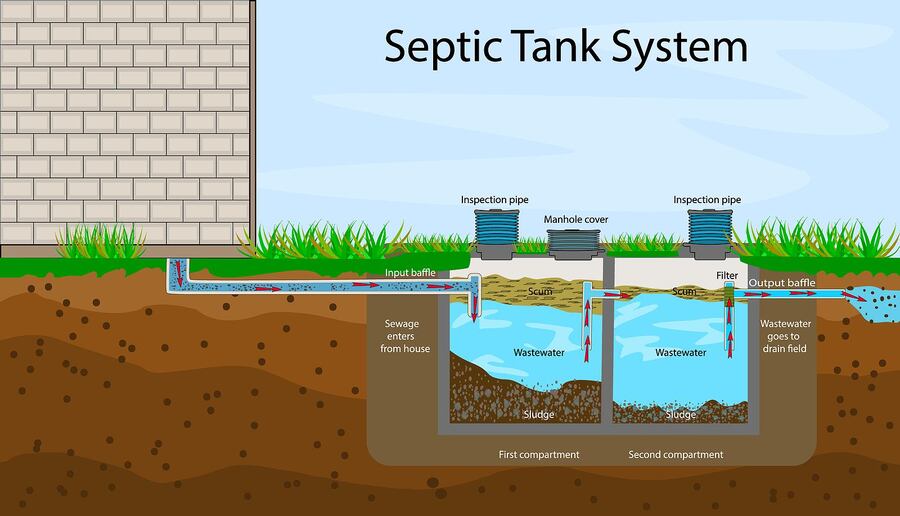Free Septic System Inspection ($99 Value) Free enzyme treatment, Financing Available
Request Service Now!
407-565-7044Free Septic System Inspection ($99 Value) Free enzyme treatment, Financing Available
Request Service Now!
407-565-7044
Septic systems are essential for managing wastewater in rural or off-grid homes, where centralized sewage systems do not reach. At the heart of these systems is the septic tank, a remarkably efficient and straightforward component that plays a crucial role in treating and filtering wastewater.
Understanding how septic tanks work can help homeowners maintain their systems effectively and prevent costly repairs. In this brief article brought to you by Septic Blue of Orlando, we give you a rundown on how your septic tank installation filters wastewater produced in your property.
If you are concerned your septic tank is not doing its job right, then call a reputable septic company like Septic Blue of Orlando. Our uniformed septic specialists have the experience, expertise, and equipment to get to the root of the problem.
A septic tank is a large, watertight container made typically of concrete, fiberglass, or polyethylene and typically installed underground. It is designed to receive and treat wastewater from bathrooms, kitchens, and laundry facilities.
The primary function of the septic tank is to partially treat and separate solid waste from the liquid before the effluent is further treated or dispersed into the soil through a drain field or leach field.
When wastewater enters the septic tank, it begins the process of separation. This process relies on the natural settling of solids and flotation of lighter materials. The heavier solid waste sinks to the bottom of the tank, and lighter materials such as oils, grease, and fats float to the top and form a scum layer. The liquid in the middle layer, known as effluent, will exit the tank for further treatment.
Inside the septic tank, anaerobic bacteria breaks down solid waste and scum into sludge, liquids, chemicals, and gases. This processes not only reduces the buildup of solid waste but also helps in partially treating the effluent before it leaves the tank. Septic tank pumping once every three to five years will remove the excesses.
After the initial treatment in the septic tank, the effluent flows out through an outlet pipe to the next stage of treatment. To ensure only liquid leaves the tank, modern septic systems often include a baffle or a filter at the outlet to prevent solids from escaping.
Once the effluent leaves the septic tank, it flows into the drain field (also known as a leach field), which provides secondary treatment.
In the drain field, the effluent enters perforated pipes buried in gravel-filled trenches, distributing it evenly across the drain field. As the effluent percolates through the soil, it is purified through natural processes. Soil acts as a biological filter, where microorganisms break down remaining organic matter, pathogens, and nutrients.
Septic systems are relatively self-sufficient systems, but they will need a hand once a year or so – but thankfully not literally. You don’t have to get your hands dirty. Call Septic Blue when it’s time for a septic tank cleaning.
The professionals at Septic Blue also have you covered when you need a septic tank repair, or even a replacement. Call Septic Blue to consult with a member of our team and let us know what you need. We’re happy to schedule an appointment or arrange urgent assistance.